Far-Right Extremist. Throughout history, the shadows of right extremism have cast a pall over societies, leaving behind a trail of conflict and division. From radical movements that espoused nationalistic fervor to charismatic figures who rallied followers around extremist ideologies, these individuals have profoundly influenced the political landscapes of their times. Understanding the roots and impacts of far-right extremism is crucial in recognizing nuanced patterns in today’s discourse.
In this exploration, we delve into the lives of ten notorious figures whose actions shaped or were emblematic of far-right politics. Each person on this list not only reflected their age’s fears and frustrations but also played pivotal roles in advancing a vision of society often marked by prejudice and intolerance.
The Rise of Far-Right Extremist
The proliferation of nationalist movements, fueled by anti-immigrant sentiment and xenophobic rhetoric, created fertile ground for these figures to emerge. As social tensions grew, so did the allure of radical solutions to complex problems. The effects? A rise in hate groups and organized violence associated with white supremacy and other forms of racial hatred.
- Understanding extremist ideology: It’s essential to note how these ideologies attract individuals searching for belonging or a sense of purpose amidst societal chaos.
- The role of propaganda: Many right-wing extremists leveraged media—both traditional and social—to propagate their views, creating an echo chamber that amplified their messages.
- A lasting impact: The legacy left by these figures continues to influence modern movements, as we see waves of right-wing radicalization surfacing across various nations.
This brief overview sets the stage for a deeper look at how political extremism can spiral into violence and societal upheaval. As we uncover these narratives, let’s keep in mind the cautionary tales embedded within them—reminders that vigilance is necessary against the tide of hatred that can arise when fear overtakes reason.
1. Adolf Hitler: Architect of Nazi Germany
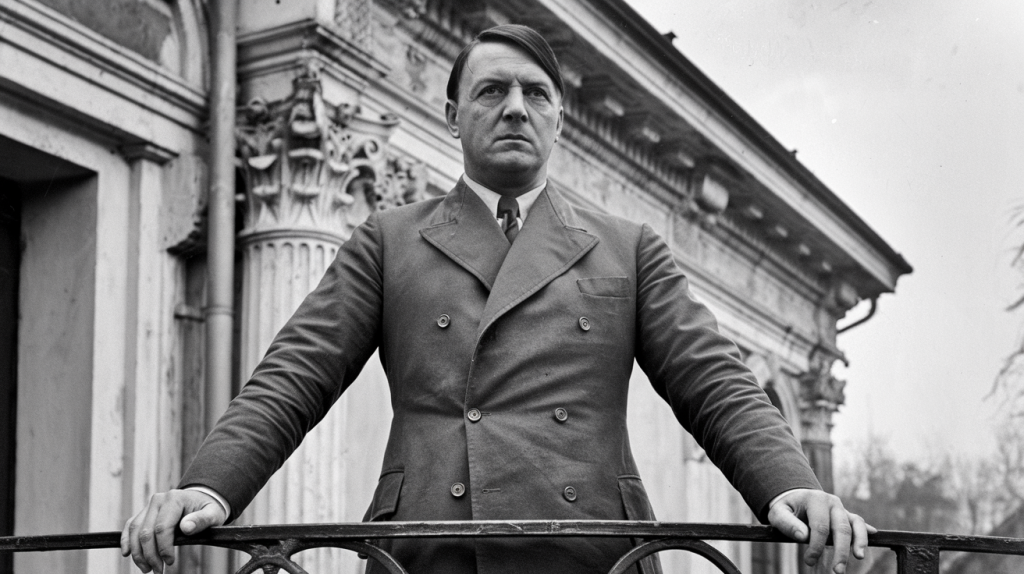
Adolf Hitler, one of the most infamous leaders in history, epitomizes the terrifying potential of far–right extremism. As the driving force behind the Nazi Party, Hitler not only orchestrated the rise of a totalitarian regime but also imparted a toxic blend of ultranationalism and anti-Semitic ideologies that led to catastrophic consequences across Europe.
Born in Austria in 1889, Hitler’s early years were marked by a struggle for identity and purpose. After moving to Germany, he became embroiled in the chaos of post-World War I, where economic hardship and national humiliation created fertile ground for extremist sentiment. With his oratory skills and fervent nationalism, he captured public attention, promising to restore Germany’s former glory.
The Nazi Regime’s Impact
Once in power, Hitler implemented policies that reflected his extremist beliefs:
- Racial Purity: His regime propagated the notion of Aryan superiority, demonizing Jews and other minority groups as threats to societal health.
- Militarization: Hitler’s expansionist ambitions led to aggressive military campaigns that triggered World War II—resulting in an estimated 70-85 million deaths.
- The Holocaust: Perhaps the most harrowing aspect of his ideology was the systematic genocide known as the Holocaust, where six million Jews perished alongside millions of others deemed “undesirable.”
“If you tell a big enough lie and tell it frequently enough, it will be believed.” — Adolf Hitler
This quote illustrates how propaganda and manipulation can fuel violent right-wing extremism. The Nazi regime excelled at using media to spread their hateful messages, creating an environment where dissent was silenced and fear was prevalent. Such tactics reveal how extremist movements often exploit societal vulnerabilities for their gain.
The Ripple Effect
The ramifications of Hitler’s rule extend far beyond his lifetime; they have shaped current understandings of political extremism. The emergence of neo-Nazi groups and other hate organizations today can be traced back to the ideologies he championed. His legacy serves as a chilling reminder of how charismatic leaders can manipulate fear and prejudice into destructive power.
As we reflect on this dark chapter in history, it becomes increasingly clear that vigilance against far-right extremism remains crucial today. By studying figures like Hitler, we are equipped with knowledge that can help prevent history from repeating itself. Understanding these narratives is vital—not just as a lesson from the past but as a call to action against hate and division in our modern world.
2. Benito Mussolini: Pioneer of Fascism
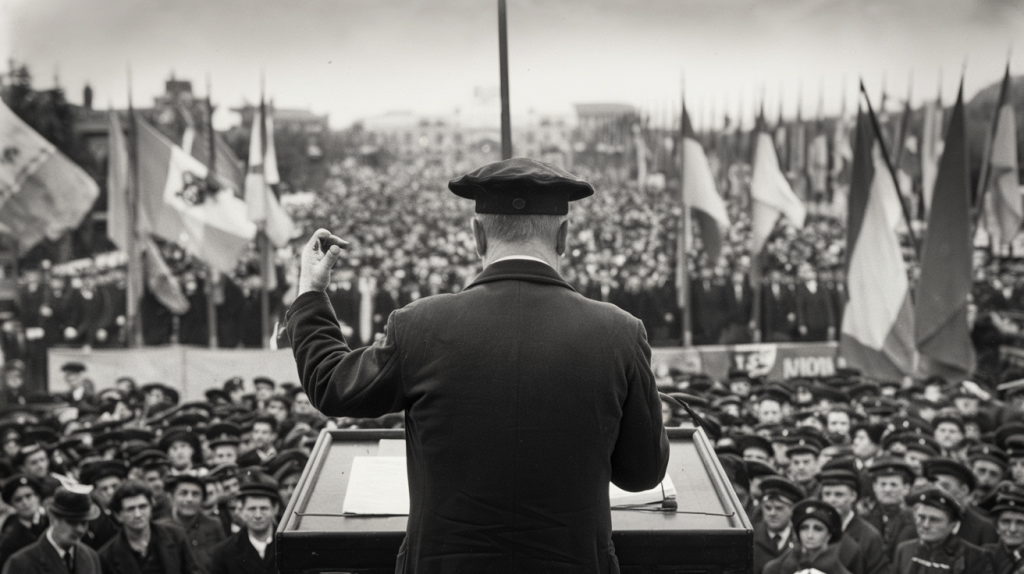
Benito Mussolini, the Italian dictator who ruled from 1922 until his downfall in 1943, is often regarded as the father of Fascism—a political ideology that thrives on authoritarianism and nationalism. His reign marked a pivotal moment in the annals of far-right extremism, characterized by aggressive militarism and a vehement anti-communist stance.
The Rise to Power
Mussolini began his political career as a socialist but later shifted to the far right after World War I, capitalizing on Italy’s post-war turmoil. He adeptly manipulated public discontent, rallying support by promising order and national rejuvenation. With his fiery speeches and strongman persona, he tapped into widespread sentiments of disillusionment.
Fascist Ideology
The essence of Mussolini’s regime rested on several key tenets:
- Nationalism: Mussolini promoted an intense form of nationalism, asserting that the state was paramount and individual rights were secondary. His famous motto “Everything for the state, nothing against the state” encapsulated this belief.
- Militarization: He sought to restore Italy’s former glory through expansionist policies, including the invasion of Ethiopia in 1935. This militaristic approach resonated with those yearning for national pride after perceived humiliations.
- Suppression of Dissent: The regime brutally repressed opposition through censorship and violence, fostering a climate where extremist violence was both state-sanctioned and encouraged.
“All within the state, nothing outside the state, nothing against the state.” — Benito Mussolini
This chilling quote reveals how Mussolini’s vision sought to eliminate any form of opposition or alternative ideologies. Under his rule, Italy witnessed significant human rights violations as dissenters were silenced through brutal means—a precursor to modern-day tactics employed by various xenophobic rhetoric groups around the world.
The Legacy of Fascism
Mussolini’s influence didn’t just end with his execution; it sparked a wave of right-wing movements across Europe, particularly during the interwar period. His brand of populist politics has reappeared in contemporary discussions surrounding far-right politics, often manifesting through nationalist parties that echo similar sentiments of ultranationalism and anti-immigrant sentiment.
- The Modern Echo: The resurgence of populist right movements today draws from Mussolini’s playbook—exploiting fears about globalization and identity crises.
- Continued Relevance: Understanding Mussolini’s role is critical for recognizing how authoritarian leaders can exploit societal fears for power.
Mussolini stands as a historical figure whose actions remind us that political extremism can thrive under certain conditions. As we examine this dark chapter in history, we must remain vigilant against similar ideologies seeking to undermine democratic values today. Through awareness and education about figures like Benito Mussolini, we can better guard against falling prey to modern iterations of his extremist ideology.
3. Francisco Franco: Dictator of Spain
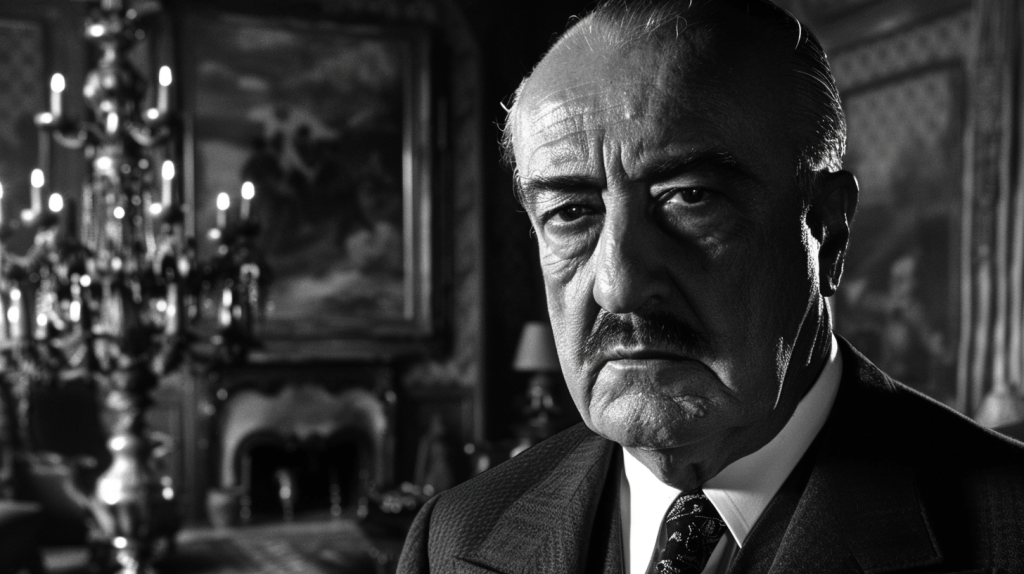
Francisco Franco, the Spanish dictator who ruled from 1939 until his death in 1975, stands as a prominent figure in the spectrum of far-right extremism. His regime was marked by authoritarian rule, brutal repression of dissent, and an unwavering commitment to ultranationalism. Emerging from the tumult of the Spanish Civil War, Franco’s rise to power was emblematic of a broader trend in Europe toward far-right politics.
The Spanish Civil War: A Prelude to Dictatorship
The seeds of Franco’s totalitarian regime were sown during the Spanish Civil War (1936-1939), a conflict that pitted leftist Republicans against right-wing Nationalists. Franco, leading the Nationalist faction, received significant support from Nazi Germany and Fascist Italy. This foreign backing helped him secure victory and establish a fascist-style dictatorship.
Franco’s Repressive Policies
Once in power, Franco implemented a series of repressive policies that reflected his extremist ideology:
- Censorship and Propaganda: The regime maintained strict control over the media, utilizing propaganda to promote its nationalist agenda while suppressing any dissenting voices.
- Political Oppression: Thousands of political opponents were imprisoned, executed, or forced into exile. The regime’s secret police operated with impunity, instilling fear among those who dared to oppose Franco’s rule.
- Culture and Identity: Franco sought to impose a singular Spanish identity based on conservative Catholic values. Regional languages and cultures were suppressed in favor of Castilian nationalism.
“Spain will be united through blood.” — Francisco Franco
This quote encapsulates Franco’s vision for Spain—a vision steeped in notions of racial purity and cultural homogeneity. His leadership not only highlighted how extremist ideologies can manifest through state apparatus but also exemplified the dangers posed by authoritarian leaders who leverage nationalistic fervor for control.
The Legacy of Francoism
The legacy of Franco’s reign continues to reverberate through contemporary Spanish society. Though he died nearly five decades ago, debates surrounding his rule remain contentious:
- The Memory Wars: Efforts to confront this dark chapter—through historical memory laws—have sparked fierce debates over how to memorialize victims while addressing issues related to historical revisionism.
- A Resurgence of Right-Wing Sentiments: The influence of Francoism can still be seen today in Spain’s political landscape where far-right parties have gained traction by invoking themes reminiscent of his era—national pride intertwined with anti-immigrant sentiment.
Franco’s dictatorship serves as a cautionary tale about the potential for political extremism to affect societies profoundly. As we dissect these historical narratives, it becomes apparent that understanding figures like Francisco Franco is essential not only for grasping past injustices but also for recognizing how similar patterns may emerge in today’s discourse surrounding authoritarianism and nationalism. By fostering awareness and dialogue around this topic, we can hope to build societies that prioritize tolerance over division.
4. Augusto Pinochet: Chile’s Military Dictator

Augusto Pinochet, the Chilean military dictator who ruled with an iron fist from 1973 to 1990, embodies a particularly stark example of far-right extremism in Latin America. Rising to power through a coup d’état that overthrew the democratically elected socialist President Salvador Allende, Pinochet established a regime characterized by severe political repression and human rights violations, all while promoting a radical free-market agenda.
Pinochet’s ascent was ushered in by the violent events of September 11, 1973, when military forces stormed La Moneda, the presidential palace in Santiago. The coup was backed by the United States government as part of its Cold War strategy against leftist regimes. Following this takeover, Pinochet declared a state of emergency and instituted martial law—a chilling prelude to the authoritarian measures that would follow.
Tactics of Control
Under Pinochet’s rule, Chile experienced widespread repression and terror:
- Political Repression: The regime targeted perceived dissenters with brutal efficiency. Thousands were arrested, many of whom were tortured or killed in clandestine operations known as “The Caravan of Death.”
- Censorship: The media faced heavy censorship; dissenting voices were silenced while propaganda extolling the virtues of the military government flourished.
- Economic Shock Therapy: Economically, Pinochet’s administration implemented neoliberal reforms that transformed Chile’s economy but often further marginalized the working class—showcasing how right-wing extremism can intertwine with economic agendas.
“I have no intention of stepping down.” — Augusto Pinochet
This defiant statement epitomizes his unwavering grip on power amid widespread opposition. His authoritarian approach not only resulted in egregious human rights abuses but also demonstrated how extreme ideologies can be masked under claims of national security and economic stability.
The Legacy of Pinochet’s Rule
The aftermath of Pinochet’s regime continues to influence Chilean politics today:
- A Controversial Legacy: While some laud his economic policies for stabilizing the country post-coup, others vehemently oppose them for their reliance on brutal repression and violations of civil liberties.
- Sociopolitical Divide: The legacy has left deep scars in Chilean society, creating divisions that persist today as debates around accountability for human rights violations continue to unfold.
Pinochet’s rule serves as a reminder of how far-right extremism can manifest through military dictatorship and authoritarian governance. By examining Pinochet’s actions and policies, we gain insight into the complex dynamics between political violence and economic ideology—an awareness necessary for recognizing similar patterns in contemporary politics worldwide.
As we reflect on historical figures like Augusto Pinochet, it is essential to remain vigilant against any resurgence of extremist ideologies that threaten democracy and human rights. By understanding these narratives deeply, we equip ourselves with knowledge vital for resisting modern forms of oppression masquerading under nationalist or populist rhetoric.
5. Jean-Marie Le Pen: France’s Far-Right Politician
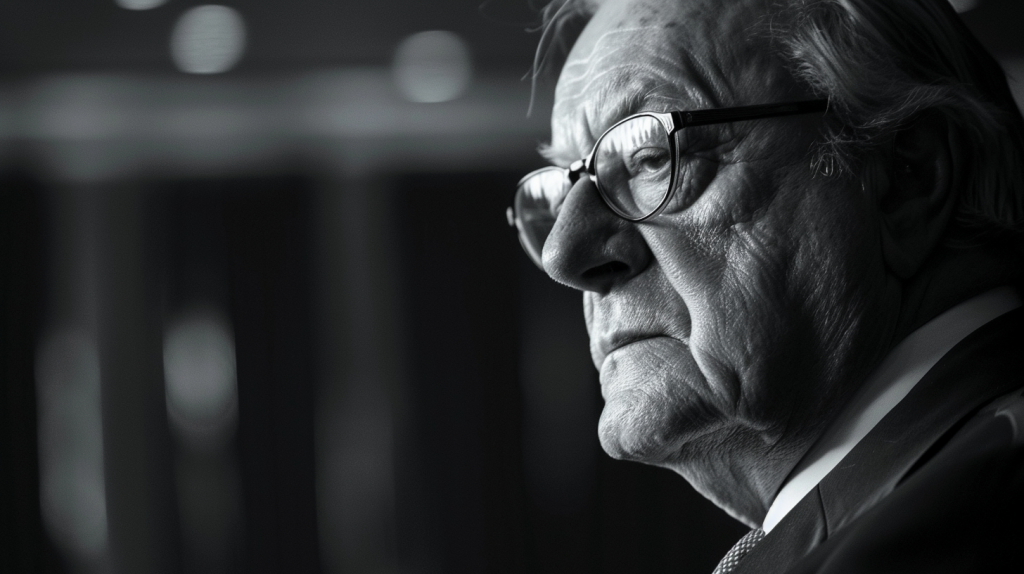
Jean-Marie Le Pen, a name synonymous with far-right extremism in France, has long been a polarizing figure in the political landscape. As the founder of the National Front (now known as National Rally), Le Pen has been at the forefront of France’s nationalist movements for decades, championing an agenda steeped in anti-immigrant sentiment and xenophobic rhetoric.
A Controversial Figure
Born in 1928, Le Pen’s political career began in the 1950s. However, it wasn’t until the establishment of the National Front in 1972 that he truly made his mark. The party’s rise was a reaction to growing concerns over immigration and cultural identity—a theme that resonates deeply within many nationalist movements today. Under Le Pen’s leadership, the party positioned itself as a defender of French traditions against what they portrayed as an encroaching multiculturalism.
- Provocative Statements: Le Pen is infamous for making inflammatory remarks, including downplaying the Holocaust and promoting stereotypes about immigrants—rhetoric that has often resulted in backlash and criminal charges for inciting hate.
- Electoral Strategy: His ability to tap into public discontent allowed the National Front to gain significant traction, especially during periods of economic downturn and social unrest.
- Legacy of Polarization: While his daughter Marine Le Pen has attempted to soften the party’s image, Jean-Marie’s legacy remains a stark reminder of how extremist ideology can linger within political discourse.
The Impact of His Leadership
The influence of Jean-Marie Le Pen extends beyond France; his rhetoric has inspired far-right groups across Europe and contributed to the normalization of extremist views:
- European Far-Right Movements: The rise of parties like Italy’s League and Austria’s Freedom Party can be traced back to similar sentiments espoused by Le Pen—focusing on issues like immigration and national sovereignty.
- Xenophobic Rhetoric: His narrative has helped mainstream anti-immigrant sentiments within broader political discussions, often overshadowing sober debates on integration and multiculturalism.
“France is not a country; it is a nation.” — Jean-Marie Le Pen
This quote encapsulates his nationalist view, emphasizing exclusivity over inclusivity—an approach that resonates with certain segments while alienating others. Such rhetoric feeds into an atmosphere conducive to hate groups and divisions among communities. It’s crucial to recognize how language can serve as both a tool for mobilization and a weapon against diversity.
The Ongoing Conversation
The legacy left by Jean-Marie Le Pen is complex; while he may have faded from frontline politics since stepping down in 2011, his influence persists through ongoing conversations about immigration, national identity, and security:
- A Family Affair: His daughter Marine continues to carry the torch, navigating between maintaining party ideologies while attempting to detoxify its image for broader acceptance.
- The Normalization of Extremism: As we see increasing acceptance of far-right rhetoric globally, understanding figures like Le Pen becomes essential for combating rising hate movements today.
The narrative surrounding Jean-Marie Le Pen serves as both a warning and an opportunity for reflection on how easy it is for extremist ideologies to infiltrate mainstream politics under certain conditions. By examining his impact on French society—and beyond—we remind ourselves that vigilance against such sentiments must remain paramount. In today’s world where divisive politics are increasingly prevalent, awareness becomes our first line of defense against hatred disguised as nationalism.
6. Oswald Mosley: UK’s Blackshirt Leader
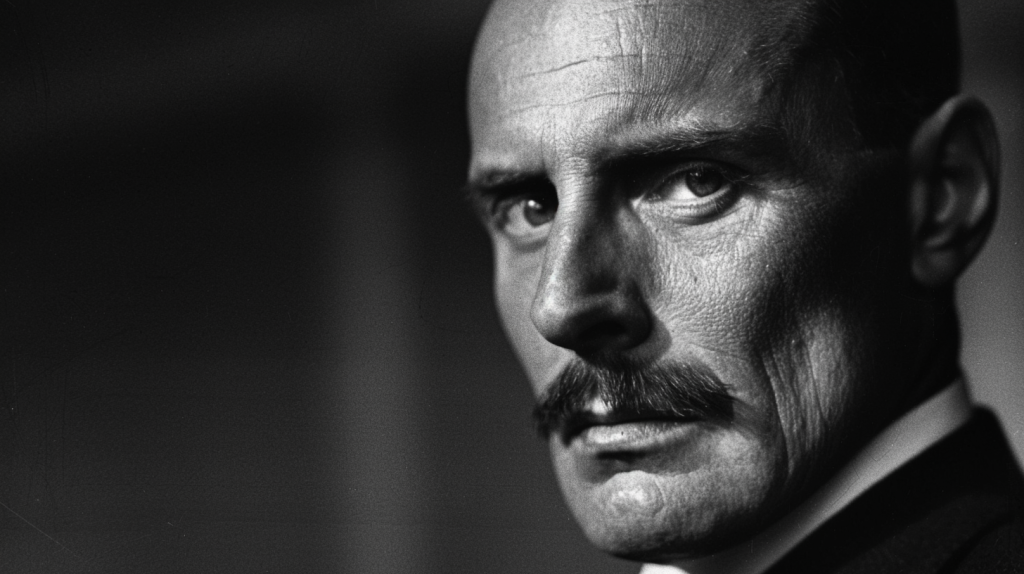
Oswald Mosley, a name that echoes through the annals of far-right extremism in the UK, was not just a politician; he was a spectacle—a man whose ambition to establish a fascist regime in Britain led him to create the British Union of Fascists (BUF). Born into privilege in 1896, Mosley’s early political career began with the Labour Party before he turned decisively towards the right, driven by a desire to combat what he perceived as the looming threats of socialism and communism.
The Birth of the Blackshirts
In 1932, Mosley founded the BUF, adopting a distinctive uniform for his followers—black shirts. This choice was more than aesthetic; it symbolized an allegiance to strength and order, mirroring the militaristic fashions of Benito Mussolini’s Italy. The BUF quickly became notorious for its street activism:
- Intimidation Tactics: The Blackshirts engaged in violent confrontations with anti-fascist groups, often inciting riots and chaos under the guise of restoring national pride.
- Mass Rallies: Mosley’s flamboyant speeches attracted crowds eager for change. His rhetoric often intertwined economic despair with scapegoating immigrants and Jews, breeding an atmosphere ripe for xenophobic rhetoric.
- The Battle of Cable Street: In 1936, a planned march through East London encountered fierce opposition from anti-fascist protesters. The event turned into a significant clash symbolizing public resistance against right-wing extremism.
“The future belongs to those who prepare for it today.” — Oswald Mosley
This quote reflects Mosley’s belief in proactive measures—his vision of reshaping Britain into a fascist state hinged on aggressive action against perceived enemies. Such beliefs resonated during economic hardship but also laid bare how extremist ideologies exploit societal fears.
The Downfall and Legacy
The onset of World War II marked a turning point for Mosley and his followers. The government interned many BUF members as public sentiment shifted drastically against fascism. While his movement dwindled during this period, its roots continued to thrive in various forms:
- Post-War Influence: After WWII, remnants of Mosley’s ideology persisted through splinter groups and later neo-Nazi organizations that sought inspiration from his radical views.
- A Cautionary Tale: The legacy of Oswald Mosley serves as a reminder that while overt fascism may have diminished post-war, underlying currents of right-wing radicalization have periodically resurfaced—often cloaked under new identities but echoing familiar themes.
Oswald Mosley’s story is one drenched in controversy and tragedy—a reflection on how political ambitions can spiral into extremism when fear meets charisma. By examining figures like him, we gain insight into how authoritarian ideologies can take root within societies torn by economic strife and cultural anxiety.
As we navigate today’s political landscape—where populist movements echo similar sentiments—we must remain vigilant against any signs that hint at reemerging extremist ideologies. Understanding these historical narratives not only enhances our comprehension but also equips us to fight back against hate disguised as patriotism.
7. Anders Behring Breivik: Norwegian Terrorist
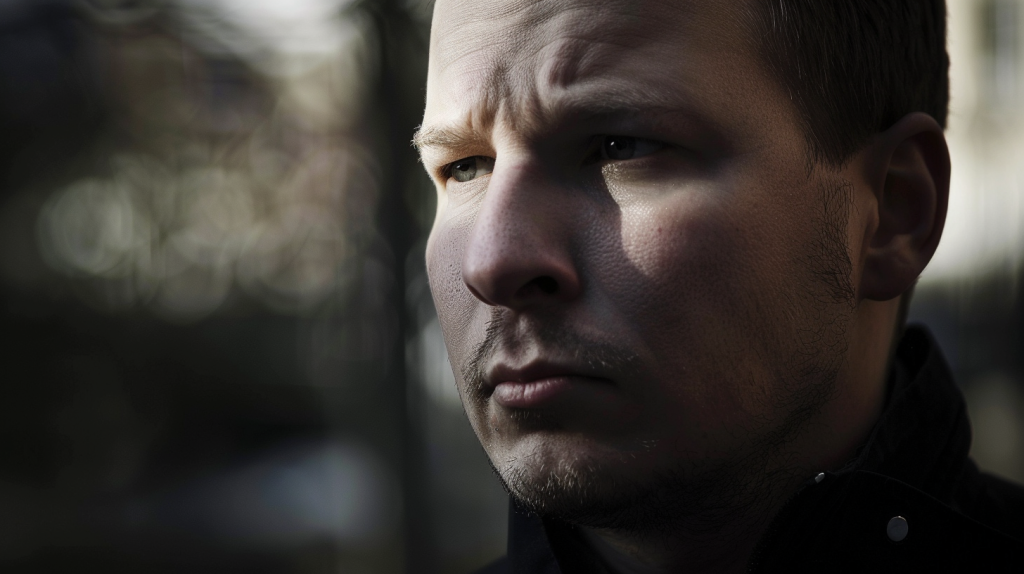
Anders Behring Breivik, a name that resonates with horror in contemporary history, is the face of violent right-wing extremist. On July 22, 2011, he executed one of the deadliest terrorist attacks in Norway’s history, shocking not just the nation but the entire world. His brutal actions were driven by a distorted ideology rooted in anti-immigrant sentiment and a fervent belief in preserving what he perceived as a “pure” European identity.
The Prelude to Terror
Breivik’s journey into radicalization was marked by isolation and an obsessive commitment to extremist ideologies. He viewed himself as a soldier in a battle against what he termed “multiculturalism”—a term often weaponized to justify xenophobic and racist beliefs:
- Manifesto of Hatred: Months prior to his attacks, Breivik penned a 1,500-page manifesto titled “2083: A European Declaration of Independence.” In it, he expressed his desire for violent action against those he deemed responsible for Europe’s supposed decline—primarily targeting immigrants and leftist politicians.
- Inspirational Influences: Breivik drew inspiration from other notorious figures of far-right extremism, such as the American anti-government groups and even earlier historical fascists. This highlights how extremist networks can perpetuate cycles of violence across national boundaries.
- The Planning Stage: His meticulous planning culminated in two coordinated attacks: the first was a car bomb explosion in Oslo that targeted government buildings; the second was a mass shooting on Utøya Island where dozens of young political activists were attending a summer camp.
The Attacks and Their Aftermath
The consequences were devastating:
- A National Tragedy: The twin attacks resulted in 77 deaths, most of whom were innocent youths. It shook Norway to its core and raised profound questions about security and national identity.
- A Wake-Up Call: The global community was jarred into recognizing that right-wing terrorism could manifest with deadly efficiency. This incident forced many countries to reassess their approaches to combating extremist ideologies that often lie below the surface.
- The Trial: During his trial, Breivik espoused his views with chilling calmness, framing himself as an avenger rather than a criminal. This further underscored how dangerous extremist ideologies can be when they find articulate proponents willing to act upon them.
“I am not insane; I am a soldier.” — Anders Behring Breivik
This quote encapsulates Breivik’s warped self-perception—viewing his heinous acts as part of a larger ideological battle rather than acknowledging their profound immorality. Such rationalizations are common among perpetrators of right-wing terrorism, illustrating how extremist narratives can twist moral compasses.
The Legacy of Violence
The legacy left by Breivik is multifaceted and troubling:
- A Surge in Extremism: His actions sparked discussions about xenophobic rhetoric, leading many nations to confront rising far-right movements emboldened by similar fears surrounding immigration and cultural change.
- A Reflection on Society: The attacks prompted Norway—and indeed Europe—to reflect on societal values regarding tolerance, diversity, and inclusion. Debates continue around how best to address these underlying tensions without compromising democratic ideals.
- A Challenge for Policy Makers: Governments worldwide have since prioritized counter-terrorism strategies that address radicalization at its roots while simultaneously protecting civil liberties—a fine balance that remains contentious today.
The story of Anders Behring Breivik serves as both an indictment of extreme ideologies and a somber reminder of the destructive potential they hold when acted upon. It calls for continued vigilance against hate-driven movements that threaten social cohesion—a fight we must all engage in if we are to foster societies rooted in understanding rather than division.
As we dissect the lives of such figures within our broader examination of right extremism, let us remember that awareness is our strongest weapon against returning tides of hatred masquerading as legitimate political discourse.
8. David Duke: American White Supremacist Leader
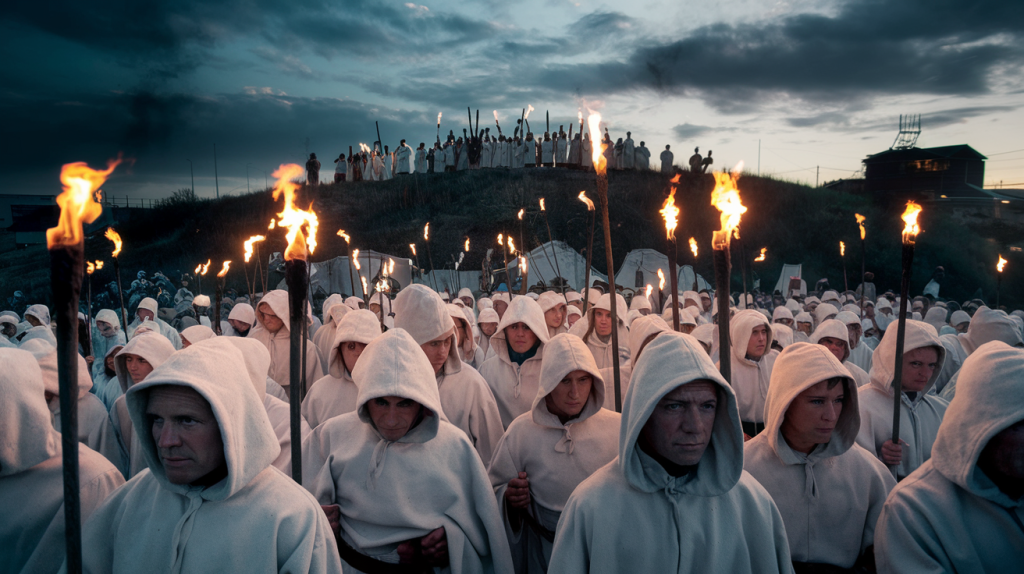
David Duke is a name that often elicits strong reactions, and for good reason. As a prominent figure in the American white supremacist movement, Duke’s legacy is intertwined with far-right extremism and its various manifestations in contemporary society. Born in 1950 in Tulsa, Oklahoma, he rose to notoriety as a grand wizard of the Ku Klux Klan (KKK) and has since become a symbol of organized hate within the United States.
The Rise of David Duke
Duke’s initial foray into politics began in the 1970s, but it was his leadership role within the KKK that would establish him as one of America’s foremost white supremacists:
- Ku Klux Klan Leadership: Duke joined the KKK in 1971 while studying at Louisiana State University. By 1974, he had risen through the ranks to become the organization’s grand wizard—a title that signifies its highest leadership role.
- Political Ambitions: In 1989, he ran for governor of Louisiana, garnering a shocking amount of support—nearly 60% of the vote in a runoff election. His campaign capitalized on fears surrounding crime and immigration, which resonated with many disillusioned voters.
- Shift to Mainstream Politics: After his initial successes, Duke sought to rebrand himself as a more palatable candidate by downplaying his earlier affiliations and emphasizing issues such as economic competition and “white rights.” This strategy aimed to draw in individuals disenchanted with mainstream politics who might not overtly identify with extremist ideologies.
A Legacy of Hate
Duke’s impact on far-right extremist extends beyond his political aspirations; his rhetoric and actions have inspired numerous hate groups across America:
- Anti-Semitic Ideologies: Throughout his career, Duke has propagated conspiracy theories about Jewish influence in politics and finance, perpetuating dangerous stereotypes that fuel anti-Semitism—a hallmark characteristic of many far-right movements.
- Xenophobic Rhetoric: He has consistently stoked fears concerning immigration, portraying immigrants as threats to American values and jobs. Such sentiment echoes throughout various nationalist movements today.
- Media Manipulation: Duke mastered the art of using media outlets—particularly radio shows and later social media—to amplify his views, helping him build a following among those drawn to extremist ideologies.
“I’m not a racist; I’m just proud of my race.” — David Duke
This quote exemplifies how extremist leaders often cloak their hateful ideologies under the guise of pride or patriotism. By framing discriminatory beliefs as legitimate expressions of identity, figures like Duke can attract followers who may otherwise reject overt racism.
The Ongoing Influence
The legacy left by David Duke continues to shape discussions around race relations and political extremism today:
- A Modern Echo: The rise of alt-right movements has seen a resurgence in ideas popularized by Duke. His influence can be traced through contemporary groups that espouse similar beliefs under different banners—showing just how resilient these ideologies can be.
- A Cautionary Tale: The normalization of hate speech within political discourse serves as a stark reminder that vigilance against such rhetoric is vital. We must remain aware that while leaders like Duke may fade from direct influence, their ideas can resurface among new generations seeking belonging or purpose amidst societal upheaval.
Duke’s story encapsulates how easily extremist ideologies can infiltrate political systems and public consciousness. In an era where division often takes center stage, understanding figures like David Duke becomes essential to combating rising hate movements today. By examining this aspect of history critically, we equip ourselves with knowledge necessary for fostering inclusive societies founded on empathy rather than division.
9. Matteo Salvini: Italy’s Nationalist Politician

Matteo Salvini has become a defining figure in Italy’s political landscape, embodying the rise of far-right extremism and nationalist sentiment in contemporary Europe. As the leader of the League Party (formerly known as Lega Nord), Salvini has positioned himself at the forefront of Italy’s anti-immigrant movement, using a blend of populism and nationalism to galvanize support and reshape public discourse.
The Rise to Prominence
Salvini entered politics in the 1990s, but it wasn’t until he took over as the leader of the League Party in 2013 that he gained national prominence. His leadership marked a strategic pivot for the party—from a regional focus on northern autonomy to an overarching agenda centered on Italian identity and sovereignty:
- Anti-Immigration Stance: Salvini’s policies are characterized by an aggressive stance against immigration, often framing migrants as threats to Italy’s social fabric. He famously declared “Italy first,” positioning his party as defenders against what they term “the invasion” of migrants.
- Xenophobic Rhetoric: His speeches are peppered with incendiary language that resonates with those harboring anti-immigrant sentiments. For many supporters, Salvini’s rhetoric feels like a rallying cry amidst fears over cultural erosion.
- Political Strategy: By tapping into widespread frustration regarding economic stagnation and perceived government inefficiency, Salvini has adeptly channeled public discontent into votes, transforming his party from a regional player into a national force.
The Policies and Their Impact
The impact of Salvini’s policies reaches beyond just rhetorical flourishes; they have tangible consequences for Italian society:
- Crisis in Humanitarian Response: Under his leadership, Italy has seen significant restrictions placed on rescue missions conducted by NGOs trying to assist migrants at sea. This policy shift has sparked international outrage and raised ethical questions about human rights.
- Political Polarization: His inflammatory rhetoric has contributed to deepening divisions within Italian society. The normalization of xenophobia in mainstream discussions echoes across Europe, fostering an environment where hate groups can thrive.
- The European Context: Salvini is not alone; his rise reflects a broader trend across Europe where extremist parties gain traction through similar anti-immigrant narratives—creating alliances with other far-right movements throughout the continent.
“We will defend our borders.” — Matteo Salvini
This statement captures Salvini’s unwavering commitment to national sovereignty but also highlights how such pledges can translate into policies that marginalize vulnerable populations. It serves as both a rallying cry for a troubling reminder of how extremist ideologies can shape governance today.
The Legacy of Matteo Salvini
As we reflect on Matteo Salvini’s influence within the spectrum of right-wing politics, several key points emerge:
- A Modern Populist Icon: His ability to communicate directly with voters through social media allows him to bypass traditional media channels—an approach that not only reinforces his image but also spreads his message far and wide.
- The Normalization of Extremism: By embedding nationalist rhetoric within conventional political conversations, figures like Salvini contribute to making extremist views more palatable—a phenomenon observed across multiple nations grappling with identity crises.
- A Call for Vigilance: Understanding the trajectory of politicians like Matteo Salvini is paramount for countering rising tides of hate and division. Acknowledging their methods can empower societies to resist similar narratives before they gain further traction.
The case of Matteo Salvini serves as a powerful reminder: while charismatic leaders may emerge promising strength and stability through exclusionary practices, it’s imperative for all citizens to remain vigilant against ideologies that threaten unity in diversity. By dissecting these narratives deeply, we equip ourselves not just with knowledge but also with tools necessary for fostering inclusive societies—ensuring history does not repeat its darker chapters.
10. Geert Wilders: Dutch Far-Right Leader
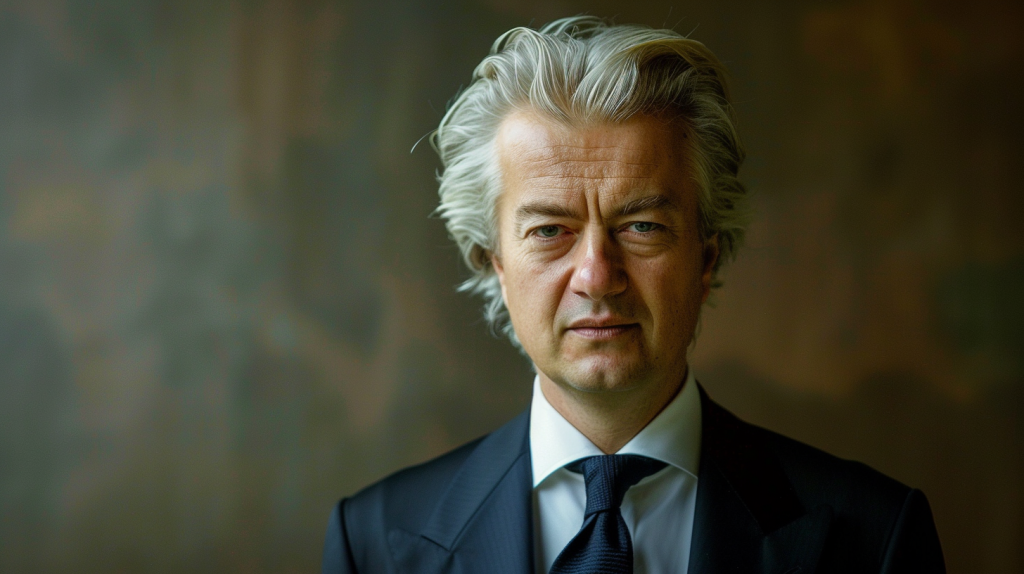
Geert Wilders, the Dutch far-right leader known for his fiery rhetoric and controversial policies, has become a key figure in the landscape of far-right extremism in Europe. As the founder of the Party for Freedom (PVV), Wilders has consistently championed an agenda that resonates deeply with anti-immigrant sentiment and xenophobic rhetoric, making him a polarizing figure within both Dutch society and the broader European political arena.
The Rise of Geert Wilders
Born in 1963 in Venlo, Netherlands, Wilders initially entered politics as a member of the People’s Party for Freedom and Democracy (VVD). However, he soon broke away to establish his own party in 2006. His rapid rise to prominence can be attributed to his ability to tap into public fears surrounding immigration and Islam:
- Anti-Islam Stance: Wilders is perhaps best known for his staunch opposition to Islam, which he openly condemns as incompatible with Dutch values. His provocative statements often paint Muslims as threats to national security and cultural integrity.
- Populist Rhetoric: By positioning himself as a defender of traditional Dutch values against what he perceives as an encroaching foreign influence, he has attracted a substantial following among those disillusioned with mainstream politics.
- Media Savvy: Utilizing social media effectively, Wilders crafts his image as a fearless truth-teller willing to speak what others won’t—a tactic that resonates with supporters feeling overlooked by standard political discourse.
The Policies and Their Consequences
The repercussions of Wilders’ political strategy are multifaceted and significant:
- Xenophobic Policies: His proposals have included bans on new mosques and immigration from Muslim-majority countries—proposals that have sparked heated debates about tolerance and integration within Dutch society.
- Normalization of Hate Speech: By framing his rhetoric around the concept of protecting national identity, Wilders has contributed to a climate where hate speech against Muslims and immigrants is increasingly normalized.
- Affect on Political Discourse: The success of the PVV reflects a broader trend of right-wing populism across Europe, influencing other parties to adopt similar anti-immigrant stances—a worrying development in contemporary politics.
“I don’t hate Muslims; I hate Islam.” — Geert Wilders
This quote encapsulates Wilders’ carefully crafted narrative—distinguishing between followers of the religion and the ideology itself. Yet such claims often obscure how extremist ideologies can breed intolerance towards entire communities, leading to societal division rather than unity.
The Legacy of Geert Wilders
The implications of Geert Wilders’ career extend beyond the Netherlands; they resonate throughout Europe’s ongoing struggles with nationalism and extremism:
- A Symbol of Resistance: For many right-wing populists across Europe, Wilders serves as an icon—illustrating that it is possible to achieve significant electoral success through anti-immigrant rhetoric.
- A Cautionary Tale: His rise serves as a reminder that unchecked political discourse can lead down dangerous paths. As mainstream parties grapple with how best to respond without conceding ground to extremist views, vigilance is essential.
- A Reflection on Society: The popularity of figures like Wilders signals underlying societal anxieties regarding globalization, immigration, and cultural change—issues needing thoughtful engagement rather than inflammatory responses from all sides.
The case of Geert Wilders highlights how individuals can harness fear into political power while underscoring our collective responsibility to foster open dialogue around these contentious issues. As we reflect on his impact within the domain of far-right extremist, it becomes increasingly clear that understanding these dynamics is crucial for navigating today’s complex political landscape. Vigilance against divisiveness must remain at the forefront if we are truly committed to building inclusive societies.
The influence exerted by these figures illustrates how deeply embedded radical right ideologies are within global history’s scaffolding, continuing to inform political dialogues today about tolerance, diversity, and governance worldwide.
For more interested articles click here.

